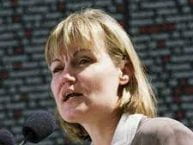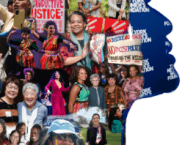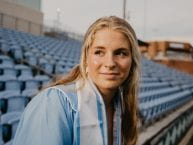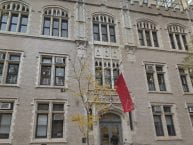On November 19th, my Social Justice group met with a woman I know very well; my mother, Martha Brooks. She is the Executive Vice President/ Executive Creative Director at an ad agency called McCann. She runs all the U.S. offices for L’Oreal Paris. To make a long title short, she basically just has a pretty big job, but a cool job at that. She and her team spend their days making commercials for L’Oreal’s products. This means ad’s for magazines, billboards, and TV. As we all know, retouching in magazines and commercials has been a big controversy for a long time. We decided to ask my mom about what she knows about retouching, and women’s portrayal in the media. We headed down to her office in mid town, and sat down at a large table over looking the Empire State Building, and began to chat.
L’Oreal uses celebrities, or models for their ad campaigns, not average, everyday women. When certain celebrities are being filmed, they get a contract to decide how retouched they get.
We asked Martha to explain how the retouching progress works in both models and celebrities, “The models that we use are usually about 19 to 25, and because of their youth, their skin is very, very beautiful, so they don’t tend to “need” a lot of retouching. On the other hand, some of the celebrities we work with are in their 30’s, 40’s, and 50’s, so some of what we do with those women is A little bit of what we call “clean up” on their faces, so if there are shadows next to the nose, we might lighten that, or if there are fine lines around their eyes or mouths we will clean that up also.” We later went on to ask Martha about the contracts that the celebrities have with L’Oreal, “If we don’t go far enough, or they don’t think they look enhanced enough, they will ask us to go further, and by the same token there have been times where a celebrity has said ‘no, you’ve gone too far, please bring back some of the reality of how I look.'” When we asked her if the models had the same privilege, she told us that the models didn’t have the same luxury. “The models don’t get a say in how much we retouch them. The way their business works is that they sign on to a company, and agree to be the face of whoever they are working for.”
Finally, to really tie her line of work to our topic, (women’s portrayal in the media), we asked Martha if she thought any companies went overboard in retouching a girls body, making them look like a different person. “I think Victoria’s Secret is a great example of over re-touching bodies, and I remember the billboards that were down on Houston street of Aerie where they made a huge point of showing that their models were not re-touched. While they did cast for girls with great bodies who didn’t really need a lot of retouching, they made a point about saying, this is the real deal and I found that really refreshing. I actually find the whole Victoria’s Secret, huge boobs, tiny waist is old fashioned. I feel like it is trying to tell you how you’re supposed to look to be attractive to a man. I feel like we are working towards how YOU feel about yourself and if YOU like how your mascara works and if YOU think your blush is beautiful and if YOU love your body.” She later went on to talk about how idealized beauty is not a new thing, “If you’ve ever seen sculptures in museums by Michelangelo, or of ancient Egyptians, you will notice that even then the bodies and faces were made to fit a certain look, that probably wasn’t a reality for most people.” The idealization of the human body has been around for centuries, without people putting up a fight about it. In the last decades women have finally been standing up and speaking about the injustices. The more people understand what is going on, the more people will be driven to help.





